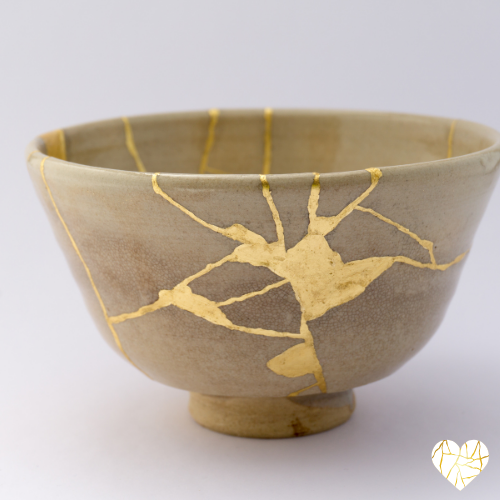In a world that often emphasizes perfection and seamless surfaces, there exists a Japanese art form that celebrates imperfection and honors the beauty in brokenness. Kintsugi, the ancient Japanese practice of repairing broken pottery with lacquer mixed with powdered gold, silver, or platinum, not only restores the object but transforms it into something uniquely exquisite.
As a therapist, I find profound inspiration in the philosophy of kintsugi. I believe that, just like the delicate pottery that undergoes the meticulous process of repair, individuals who have experienced trauma are not irreparably broken. Instead, they possess a resilience that can be highlighted and strengthened through the therapeutic journey.
Kintsugi teaches us to embrace imperfections and view them as a part of a richer, more intricate whole. Similarly, therapy is a process of acknowledging and integrating the fragments of one’s past, understanding that, while painful, these experiences contribute to the uniqueness of an individual. The therapeutic journey involves piecing together the shattered parts, not to erase the scars, but to illuminate the strength that arises from healing.
In the art of kintsugi, the cracks are not concealed; they are accentuated with precious metals, turning the brokenness into a thing of beauty. This mirrors the therapeutic process, where acknowledging and exploring the wounds can lead to profound personal growth. The scars from past traumas become a testament to resilience and the ability to overcome adversity.
Kintsugi also embodies the concept of wabi-sabi, finding beauty in impermanence and imperfection. Similarly, therapy invites individuals to recognize that healing is an ongoing, evolving journey. It is not about reaching a state of perfection but embracing the ebb and flow of life’s challenges and victories.
In my role as a therapist, I am passionate about fostering a kintsugi mindset in my clients. I encourage them to see their experiences not as debilitating fractures but as opportunities for growth and transformation. By navigating the process of therapy, individuals can discover the strength within themselves, much like the glistening gold in the mended pottery.
As we delve into the art of kintsugi, we discover a profound metaphor for the human spirit. Like the delicate pottery, individuals who have experienced trauma are not shattered beyond repair. Through therapy, they have the potential to become even more resilient, with the beauty of their healing radiating through the cracks. I stand firm in the belief that therapy can be a transformative journey, illuminating the strength that lies within each person, reminding us that, just like the artful pottery, we are not broken; we are resilient and beautifully whole.
